

At SALTEX 2024 I made a presentation to the title above and this article provides the text used to support it.
Before we can consider sustainability properly and decide how we can contribute to a sustainable agenda in our own personal and working lives, we need to properly understand what it means. The dangers of not doing so are that we look to do something which may seem to be sustainable in one element but be thoroughly detrimental to the others. So let us remind ourselves that in judging whether we are adopting sustainable practice, there are three key pillars to be considered namely
None of these can be considered in isolation. As an example, let us consider practices employed for weed, pest and disease management. Some argue for a world free of pesticides, as they say that this would be more sustainable - but is that totally true? Maybe some alternative methods of control considered have greater carbon emissions for example, certainly if viewed from a full life cycle analysis, or their greater cost might impact upon financial viability. This is not an argument for pesticides per se, indeed minimising and targeting their use is clearly beneficial and core to sustainable practice, it is just that, in seeking to be fully sustainable, we must judge the various methods of control available against all three pillars of sustainability and make fully considered choices. As with all decisions personal or business, they benefit from proper consideration and appraisal before implementation.
Policy & Legislation
In considering sustainable practice we also need to consider the policy and legislative matters including codes of practice. In a presentation such as this, it is not possible nor necessary to cover this in any detail. However some key areas are:
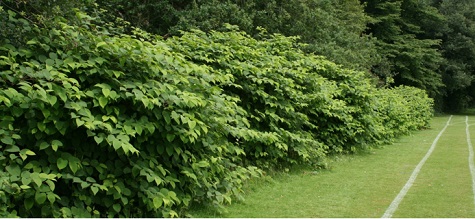
The UK national Action Plan is a key driver for how we manage amenity spaces as, whilst in its early form its focus was very much on pesticides, it now embraces all approaches and sets both requirements and clear guidance. The current plan has been under review for some time now and still awaited but the clear future message is that all involved must be able to demonstrate sustainable practice and, in terms of weed, pest and disease management, prepare an integrated plan showing a fully integrated approach.
Challenging targets
In terms of the UK, there are challenging targets set for sustainability and achieving net zero. These have got further emphasis from the new government. It is imperative that any amenity organisation not only implements sustainable practice themselves but also demonstrate this to their customers or members and indeed to the general public. We will return to the topic of integrated planning later.
So clearly policy and legislation is a key driver for implementing sustainable practices but of course it is also vital if we are to meet the challenge of climate change and maintain our planet for next generations. As Sir David Attenborough said ‘It is surely our responsibility to do everything within our power to create a planet that provides a secure home, not just for us but for all life on earth.’
Biodiversity
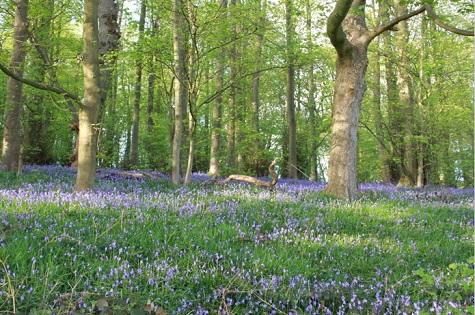
In that context managing wildlife and habitats is an important issue and an important consideration is managing amenity spaces. In the UK, we are accustomed to a countryside that may at first glance appear ‘natural’. However, despite woodlands, dunes and agricultural areas containing a diverse range of plants and animals, many of these habitat-types are heavily managed and influenced by people. Further, it is often not appreciated that ‘natural’ habitat-types, such as hay meadows, are managed through traditional farming practices that have been established for hundreds of years. It is therefore important to realise that what appears ‘natural’ is not necessarily so, and that the activities of humans have shaped the landscape in which we live for many thousands of years.
Whilst nature reserves are important sanctuaries for plants and animals, creating a network of green spaces is essential for the maintenance of healthy populations of plants and animals This can be best achieved by improving local environments, and, where possible, linking areas of biodiversity. Ways here maybe through say linkage of urban parks, roadsides and golf courses, and rural farms, forestry and quarries; previously isolated pockets of biodiversity are then better connected and more able to rebound from stressors. In this way populations become more resilient to short and long-term environmental change.
Into this mix, we need to consider biodiversity loss and gain. There are four key ways to achieve this labelled as avoidance, minimising, restoring and offsetting. Again in this presentation it is not possible to examine these in detail but in any amenity management situation, they should be important considerations. Achieving biodiversity gain (BNG) is now often a requirement in new building projects and housing developments. As we move closer to 2030 and net zero, increasing pressures will be applied in any amenity or landscaping situation to achieve BNG.
Starts with the soil
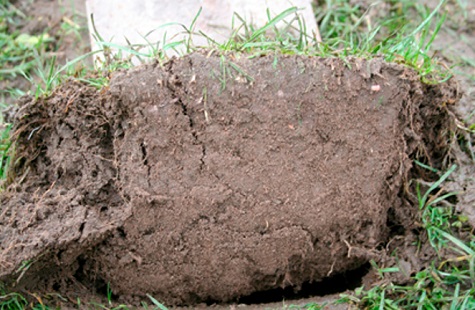
When considering sustainable practice, another area often neglected previously is sustainable soil management. This audience will know that when considering approaches to the management of amenity areas, proper attention to soil type and its management is a vital component. Soil considerations are especially true for sports surfaces. Sports turf managers are in the business of developing playing surfaces and much of what a sports turf manager does to develop playing surfaces, such as topdressing in hot weather, is not always good for the grass, but is good for the games that will be played on the surface. Those in the business of managing sports fields have much to consider and evaluate including water quality and quantity, shade issues, budgets, drainage, thatch, layering, pests and aeration scheduling in addition to adopting sustainable practice. Shading of surfaces can also pose specific problems for growing grass.
Thinking about the surfaces we manage in respect to soil quality help us to manage them more sustainably. Soil quality is the ability of a soil to perform functions that are essential to people and the environment. In assessing soil quality, some key properties are soil structure, organic matter level, microbial biomass, microbial activity and infiltration rate. Many properties affect each other. For example, drainage affects temperature, temperature affects nutrient cycling and temperature and drainage affect carbon retention and cycling.
Don’t forget to consider the life cycle
So clearly there is much to consider in developing sustainable practices and we have not yet referred to pollution issues nor carbon foot printing. In terms of the latter it can be misunderstood. Life cycle assessment (LCA) is a science-based tool for assessing environmental impacts associated with all the stages of the life cycle of a commercial product, process, or service.
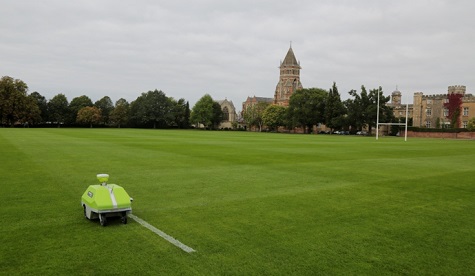
For example, in the case of a manufactured product, environmental impacts are assessed from raw material extraction and processing (cradle), through the product's manufacture, distribution and use, to the recycling or final disposal of the materials composing it (grave) i.e., a lifetime perspective. In topical debates say in the use of pesticides compared to other methods, it is important to make sure that all the footprints in all the stages are considered in any evaluation. Calculating greenhouse gas emissions (or a carbon footprint) is just one dimension of an LCA, along with various categories of resource use, human health, and ecological consequences. Impacts such as ozone depletion, eutrophication and impacts on human health are common ‘impact categories’ reported in LCAs.
Application of the theory into practice
Day to day running of a business or any amenity operation is a challenge – where do we find the time to measure the pollution that we produce, and change our approaches. As I often say, sustainability is an often used and very misunderstood term. Boiling it down, it means doing more with less. Using the right products at the right time is a key way to reduce our environmental impacts, including pollution e.g., applying too much herbicide at the wrong time and having to dispose of more product containers as a result. Looking at it another way, sustainability can be viewed as doing things more efficiently, and getting more value for what you do as a business. This second view of sustainability (and pollution reduction) is often not described, but it is of material benefit to those working sustainably, using the right tools for the job, at the right time.
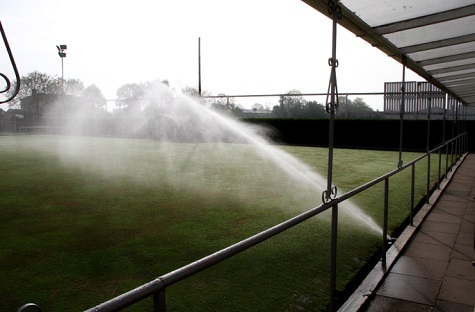
Straightforward measurements such as fuel use, water use and labour costs can be useful not only for reducing pollution, but also our understanding of how efficient processes that we use in our day to day activities really are. If we can make savings on these processes we benefit from a better service and are able to reduce our costs and increase our profitability and hence sustainability.
In terms of implementing sustainable practice, the three Rs are as important here when referring to reducing pollution or our carbon foot print as they are to all activities. These are reduce, re-use and re-cycle. And a reference to the term greenwashing is important. This is increasingly being highlighted and refers to behaviour or activities that make people believe that they or their organisation are doing more to protect the environment than really is the case. We return to the very beginning of this presentation and the definition of sustainability with its three pillars. It can be easy to believe that a particular action is environmentally correct but it cannot be considered in isolation from the other three pillars of sustainability or indeed without considering in terms of its full life cycle analysis.
Integrated management
I did promise to return to the topic of integrated planning and management. This is really at the heart of implementing sustainable practice and is increasingly likely to be seen as a requirement. Adopting an integrated approach is often referred to but exactly what does it mean? Just as there can be misunderstandings of what sustainability means, the same applies to the term integrated. In terms of weed management for example, some jump to a conclusion that it means not using herbicides; some use the language of seeking alternatives. In truth, taking an integrated approach to weed management involves assessment of all the factors and methods involved, including plant protection products, so as to choose the most appropriate mix for a given situation which is economic, efficient and effective and minimises impact upon the environment and protects the public.Taking an integrated approach provides the best sustainable practice.
In creating an integrated plan, it establishes the right mix of approaches for any given situation. So in weed management for example factors for consideration are where it can be influenced choice of plants, design, cultural practices, assessing weed cover that can be tolerated, regular maintenance of areas etc. In controlling weeds on hard or soft surfaces, evaluation of various approaches is important to achieve the right mix in any given situation to achieve required outcomes and minimise impact on the environment and implement in a safe and sustainable manner. The Amenity Forum offers to its members templates for constructing integrated weed management plans which can be extremely useful.
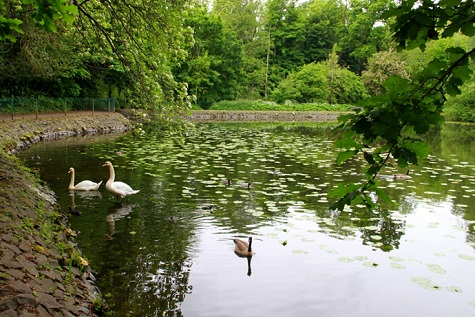
Conclusions
I am aware that this has been a very quick run through of the topic and really touched the surface. Over recent months I have written a series of articles on sustainable practice for TurfPro which hopefully will provide more practical advice. I would also refer you to a series of BASIS Classroom courses on the topic which provide more information again in a practical format useful for anyone engaged in or with an interest in amenity management.
These are challenging economic times with ever spiraling input prices, pressures on individual’s spending and more. The chill wind is reaching everyone and the pressures on those who manage and operate golf courses, related sports facilities and our parks and urban amenity spaces are high. However, despite all of this, those directly involved are still expected to produce high quality areas which are fit for purpose even though budgets are squeezed. Sustainable practice needs to be seen as a way to deliver on this, not a burden. Small steps are the answer and as always I know amenity operators and managers will deliver.
Previous articles in this series
SUSTAINABILITY IN THE TRAINING SECTOR
SUSTAINABILITY IN LOCAL AUTHORITIES
AN EXAMPLE OF SUSTAINABILITY IN MACHINERY SUPPLY
SUSTAINABILITY IN THE GOLF SECTOR
SUSTAINABLE PRACTICE IN THE AMENITY SUPPLY SECTOR